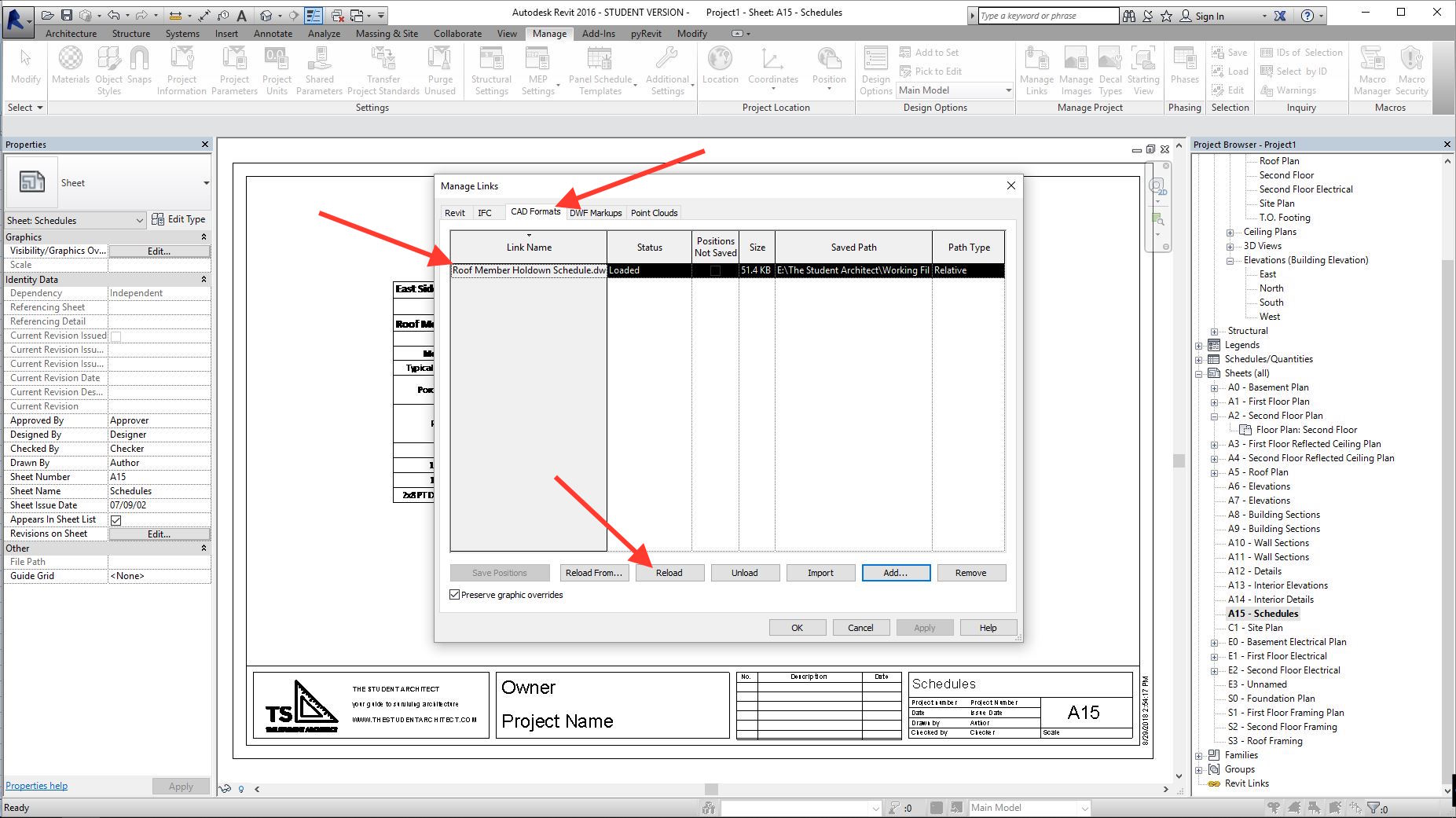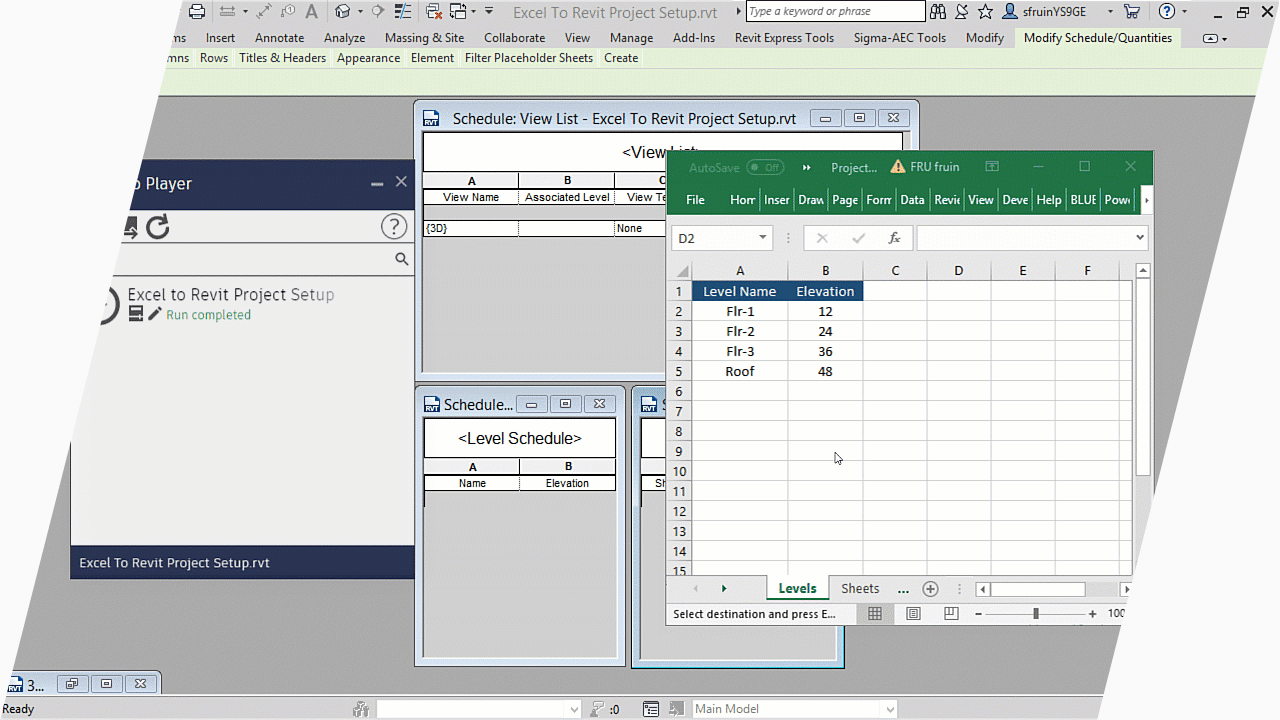Revit Tools: Your Secret to Accuracy and Productivity
Wiki Article
Excel-to-Revit: A Game-Changing Operations for Architectural Design - Revealing the Tricks
Are you tired of costs hours on building layout? Look no additional! Presenting excel-to-revit, the game-changing workflow that will certainly change your design procedure. With excel-to-revit assimilation, you can simplify your architectural style, unlock efficiency, and make the most of collaboration within your team. In this article, we will certainly unveil the tricks of this effective tool, showing you how it can change your style jobs. Prepare yourself to take your architectural layout to the following level with excel-to-revit!The Power of Excel-to-Revit Combination

Think of the convenience of having the ability to edit and upgrade task information in Excel, and immediately see those modifications mirrored in your Revit version. Say goodbye to hand-operated data access or tiresome updates. With Excel-to-Revit integration, you can save time and minimize errors by leveraging the power of Excel's features and solutions to immediately generate precise information in Revit.
Not only does this assimilation improve performance, however it also enhances cooperation amongst team participants. You can easily share Excel data with colleagues, who can then import the information right into their Revit versions. This advertises a smooth exchange of info and makes sure that everyone is dealing with one of the most current information.

Simplifying Building Style With Excel-To-Revit
Simplifying architectural layout is made easier with the usage of Excel-to-Revit (revit tool). With this effective assimilation, you can optimize your process and conserve valuable time throughout the layout process. By leveraging the capabilities of Excel and Revit, you can effortlessly move information between both platforms, eliminating the need for hands-on data access and decreasing the threat of errorsExcel-to-Revit permits you to import and export data easily, allowing you to easily upgrade and change your architectural designs. You can produce routines, calculate amounts, and generate records in Excel, and after that transfer that data directly right into your Revit version. This integration guarantees that your layout info is constantly up-to-date and integrated, getting rid of the demand for hands-on updates and decreasing the opportunities of incongruities.
By utilizing Excel-to-Revit, you can additionally make the most of the effective computational capabilities of Excel. You can perform complex computations, examine information, and automate repeated jobs, all within Excel. Then, with just a few clicks, you can import the outcomes back into Revit, enabling you to make enlightened style choices and optimize your architectural designs.
Unlocking Efficiency: Exploring the Excel-to-Revit Process
Optimize your efficiency by flawlessly incorporating Excel and Revit for a more efficient workflow. With the Excel-to-Revit operations, you can open an entire new degree of performance in your building design procedure. By using the power of Excel's information management capabilities and integrating it with the versatility and precision of Revit, you can improve your layout procedure and conserve important time.Among the essential benefits of this integration is the ability to import and export information between Excel and Revit. This suggests that you can quickly move project details, such as area routines or material amounts, click here for more info from one software program to the other, eliminating the requirement for hands-on information access and reducing the possibilities of mistakes. You can likewise produce customized solutions and calculations in Excel to automate repetitive jobs and execute complicated calculations, which can after that be perfectly integrated right into your Revit models.
Furthermore, the Excel-to-Revit process enables much better sychronisation and partnership in between employee. With Excel serving as a main information hub, numerous employee can deal with different facets of the task concurrently, sharing and updating info in real-time. This not just improves communication yet likewise makes sure that every person is dealing with one of the most current data, getting rid of the threat of inconsistencies.
Maximizing Collaboration: Excel-to-Revit for Architectural Teams
By seamlessly incorporating Excel and Revit, architectural teams can considerably enhance partnership and accomplish a lot more efficient layout outcomes. When using this powerful operations, you can conveniently move data between Excel spreadsheets and Revit versions, improving the design process and boosting interaction among team members.In addition, by leveraging Excel's effective calculation capacities, you can carry out complex computations and evaluation on your design data, supplying beneficial understandings and driving educated decision-making. This integration additionally enables you to export data from Revit to Excel, allowing you to create extensive reports, graphes, and charts for discussions and analysis. This collective process promotes effective interaction and coordination amongst group members, as Excel serves as a main center for information administration and sharing.
General, by accepting the Excel-to-Revit operations, architectural teams can accomplish greater levels of partnership, effectiveness, and precision in their style process. revit tools. This combination empowers teams to collaborate seamlessly, making certain that every person gets on the very same page and adding to the success of the task
Unveiling the Keys of Excel-to-Revit Assimilation

Among the keys of Excel-to-Revit combination is the ability to utilize the power of formulas and computations in Excel to drive specifications and generate complicated geometries in Revit. You can link Excel spread sheets to Revit households, enabling you to input information straight right into the spread sheet and have it immediately update in the Revit model. This enhances the layout process and makes sure precision and uniformity across the project.
Another trick is the capability to create personalized schedules and records in Excel, making use of data extracted from Revit. This enables you to visualize and evaluate task information in a manner that is not feasible within Revit alone. You can easily create quantity liftoffs, expense estimates, and task timelines, supplying useful insights for decision-making and task monitoring.
Additionally, Excel-to-Revit assimilation makes it possible for effective cooperation among staff member. Several customers can service the same Excel spread sheet simultaneously, making it less complicated to coordinate and track modifications. You can likewise make use of Excel's commenting function to supply responses or connect layout revisions.
Conclusion
By combining the power of Excel and Revit, engineers can currently work much more effectively, save time, and create better designs. Begin including excel-to-revit assimilation right into your building style process today and reinvent the way you function.With just a couple of clicks, you can import the results back into Revit, you can try here enabling you to make educated design choices and optimize your building styles.
By making use of the power of Excel's information monitoring abilities and combining it with the versatility and accuracy of Revit, you can improve your style procedure and conserve valuable time.
By flawlessly integrating Excel and Revit, building teams can greatly enhance cooperation and achieve much more reliable layout results. When using this powerful operations, you can conveniently move data in between Excel spreadsheets and Revit versions, simplifying the layout procedure and enhancing interaction among team participants.Moreover, by leveraging Excel's powerful estimation capabilities, you can carry out complicated computations and evaluation on your design data, supplying beneficial insights and driving educated decision-making.
Report this wiki page